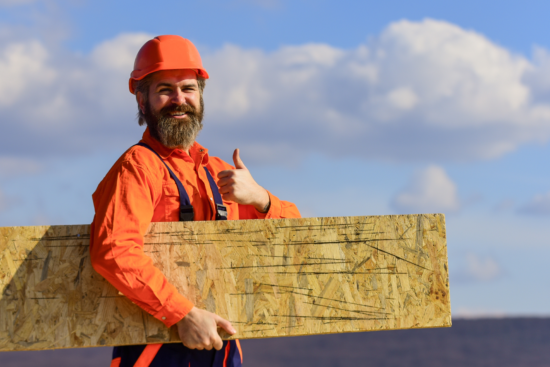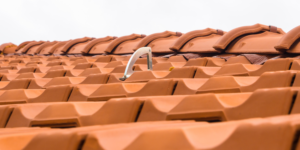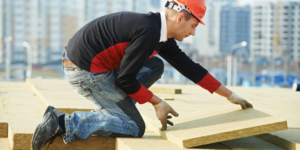© All Rights Reserved | Roof Replacement and Repair - Zaman Roofing LLC. | Website Design & CT SEO Powered by High Point SEO CT
- Google Rating5.0Based on 33 reviewsZaman Roofing - CT Roofing Contractors & Roof Repair5.0Sergey Y."Zaman Roofing” recently completed a roof replacement project in our condo complex, and we are extremely satisfied with their service. From start to finish, their team demonstrated professionalism, efficiency, and exceptional craftsmanship. They were prompt in their communication, providing detailed explanations and answering all our questions. The crew arrived on time, worked diligently, and completed the project within the estimated timeframe.Not only did Zaman Roofing exhibit outstanding technical skills, but they also ensured minimal disruption to our daily activities. They took great care to protect our property, cleaning up thoroughly each day and leaving no trace of debris behind.The quality of the new roof is outstanding. Zaman Roofing used top-grade materials and paid attention to every detail, resulting in a sturdy and visually appealing finished product. The roof has significantly enhanced the overall appearance of our condo complex.We would highly recommend Zaman Roofing to anyone in need of roofing services. Their professionalism, expertise, and attention to customer satisfaction make them a reliable choice for roof replacements. We are grateful for their excellent work and would not hesitate to hire them again in the future.Christopher Z.Zaman Roofing was AWESOME!!!! This is my third time doing a roof in CT on my third home and Zaman did an outstanding job on my rather unique roof line. They even replaced a skylight. I needed a Roof Contract in place before insurance would allow the purchase because the seller was a DeeBag. Zaman worked with my realtor, banker, etc and even waited patiently while the seller delayed the process by 4 months. The week I closed, Zaman Roofing was up and at em. Stripping, prepping and replacing. In and Out. Property was nice and clean after the work was complete. I would highly recommend.Steve TZaman Roofing, located in Berlin, CT, truly excels in providing top-notch roofing services. I am absolutely thrilled to give them a well-deserved 5-star review for their outstanding work. They have proven themselves as experts in roofing Berlin CT, and I couldn't be happier with the results.When it comes to roofing in Berlin, Zaman Roofing stands out from the competition. Their team of skilled professionals demonstrated exceptional attention to detail during the installation of my new roof. They meticulously handled every aspect of the project, ensuring both aesthetics and durability were top-notch.What impressed me the most was Zaman Roofing's commitment to customer satisfaction. From my initial contact with them, they were responsive, courteous, and eager to understand my specific roofing needs in Berlin. Their exceptional customer service throughout the entire process made me feel valued as a client.Zaman Roofing's expertise in roofing Berlin is truly commendable. They have an extensive portfolio of successful projects throughout Berlin, CT, showcasing their skill and knowledge in a variety of roofing styles and materials. Regardless of the complexity of the job, they have the necessary resources to deliver exceptional results.I cannot emphasize enough how satisfied I am with Zaman Roofing's services in Berlin, CT. Their professionalism, reliability, and dedication to their craft are unparalleled. If you're searching for exceptional roofing services in Berlin CT, Zaman Roofing is the company to choose. They will exceed your expectations in every way.In conclusion, Zaman Roofing unquestionably deserves a stellar 5-star rating for their exemplary roofing services in Berlin, CT. Their expertise in roofing Berlin and roofing Berlin CT shines through in their exceptional workmanship and customer service. I highly recommend Zaman Roofing for all your roofing needs.Gary G.Zaman replaced the roof on my 2,200 sq. ft. colonial in 2015. The workmanship was perfect. Unfortunately, over time, the top-of-the line shingles discolored. He was totally supportive in getting the manufacturer to replace them at no cost to me. He just replaced the roof with the new shingles. It was another perfect job. It was completed in one day. The crew was great and they cleaned the area spotless.Chris DWe used Zaman Roofing for our Roof and Gutter Replacement, I acquired 5 quotes for the work and found Zaman to be the most reasonable, it was a Good Decision to choose Zaman Roofing, Seweryn was Professional in every aspect and the Clean-up was nothing short of Amazing, I would Highly Recommend using Zaman RoofingRobert D.Excellent Service and Value - great crew and easy to deal with - highly recommended !Sunghoon P.Great work and reasonable price. I am so happy with their service. I asked a bunch of questions before and after the service and his responses were very prompt and straight to the point. Highly recommend.Adrienne M.I am so pleased that I used this company. My new roof looks fantastic. Such a hard working crew. Seweryn was informative and professional. Price was very completive. Don't hesitate to use them you will be very satisfied. Highly recommend!Nancy M.Good communication, timely response and knowledgeable. Very happy with our experience and highly recommend this company.Beata M.We used Zaman for our roof replacement recently and are very pleased. They replaced our roof in one day and gave us a very competitive quote. Good quality of work. Highly recommended.Lori K.They were here when they said they would. Professional & left everything neat ,cleaned up everything. They were in & out in a day & a half. Would recommend Zaman roifing.Dan R.A+ service, professional and quick response time.Anna G.Zaman and his crew provide great workmanship they installed new roofs they take great pride in the work they do. They were punctual and did a amazing job with the roof installation and clean up. Highly recommend Zaman Roofing to family and friends. Thank you for the opportunity to work with such a amazing contractorScott M.Awesome contractor, I would highly recommend him to family & friends. Seweryn & his crew were here on time & worked diligently. They were the happiest workers I've ever dealt with (I am a former construction project manager with the Federal government). Any & all questions were answered. My neighbors couldn't believe they finished the job in one day & complimented how great the new roof looks.Clement D.Great roofing contractors. I love to recommend it to my friends and family.Karen 9.With the quality, price, timeliness, all round nice guy and great crew, Zaman Roofing LLC is what other companies aspire to be.... Clean, helpful and a pleasure to recommend....james C.Excellent experience from start to finish, all appointments and work times met in a timely fashion, workmanship and clean up left nothing to be desired.Would be a definite recommendation, very pleased.Margaret B.I had obtained multiple quotes and did my due diligence research and Seweryn Zaman came back with fair price and good recommendations. He was professional, explained everything that he was going to do and never once he rushed me during decision process. He showed up on time with his hard working crew and finished my roof in one day. I was amazed with his crew who worked like busy bees. Very impressed with the clean up process and the end product. Two months after he finished my roof he was still helping me deal with the insurance company making sure I had everything I needed. Thank you SewerynSteve B.Very professional and easy to work. The crew came in, replaced my roof and then cleaned up everything! Highly recommended.Jim O.Competitive quote among four others. Seweryn Zaman provided larger color samples of the shingle colors we were interested in. He obtained the building permit, showed up on the day expected with his entire crew. Our older roof was on 24" trusses and needed more plywood replaced than anticipated. He got the additional sheets replaced on the day of the re-roofing. The crew worked with him late until the job was done and picked up every piece of old debris. The roof passed final town inspection with no concerns. Zaman Roofing is easy to deal with; he's responsive on text messages and phone calls. I used them in the past for an emergency repair and he found a well-hidden leak from the builder.Dale C.The crews did a good job, and the leader of the crew did a great job when they replaced the roof of my house in Farming on 7/6&7 this year. When they worked on the project, they worked professionally and in detail. We are very pleased with the work they have done, and highly recommend people to have the company worked on their roof projects.Forrest B.Zaman's was very professional, excellent quality of work and very responsive to our needs. This roofing experience was excellent from start to finish and provided an excellent value. Would certainly recommend them to any friend.Yonatan M.We used Zaman Roofing to replace our roof in 2019 and could not be happier with the service and product. A highly professional company and great personal interaction with the owner. The workers took great care of our landscaping, and the owner was there frequently to supervise the work and take care of finishing touches like flashing the chimney. We have had zero issues since then and highly recommend this company.Quinn V.Zaman was awesome. He was communicative, on-time, and was able to give me a quick inspection of our roof despite the rain. I rarely have a contractor tell me that I didn't need to spend any money, but Zaman told me my roof was fine for the next several years.magdalena K.We recently used Zaman Roofing to replace our 26-year-old roof. Right from the start they were great! Sevy was extremely professional and knowledgeable and gave us a great quote. Everything was done as they described and the final project looked great. The owner was on the job from start to finish as he promised.Ariadna G.Our experience with Zaman Roofing was excellent. I was very impressed with both their work and their customer service. Seweryn was very knowledgeable and professional.Larry G.What a wonderful business. Very responsive. They showed up exactly when expected, completed the project quickly and accurately and left no trace after clean up. All with a very competitive price. I would highly recommend Zaman to anyone looking to have roofing work done.STEVE R.I was very pleased with the roof and gutter repairs performed by Zaman Roofing on two of my buildings. Good workmanship and fair prices, I would recommend and use again.Danielle D.These guys stripped and reshuffled my roof is 1 day! They did an awesome job. Roof is beautiful. He uses a dump trailer which is great and they cleaned up well. Very happy with the work. Also pricing was fair.

Recent Advances in Active and Passive Fall Protection for Roofers
Category: Roofer • March 12, 2024
Roofers need to make sure that they are well-protected from falls. Fall protection devices are essential for preventing accidents in the construction trade. Various fall protection systems, such as active and passive methods, solve this problem.
In active fall protection systems, gadgets are used to prevent or stop your fall. PFAS (personal fall arrest systems) are the most popular active fall protection devices, and they include guardrails and safety nets. Workers should have the correct use and wear of the equipment in these systems.
On the other hand, active fall protection systems deploy human beings to prevent accidental falls, whereas passive fall protection systems use physical barriers to prevent falls. The guardrails, cages, and netting are the passive guarding solutions. After the systems are mounted, they are run entirely without human interference.
Active Fall Protection Systems: Advancements and Benefits
In recent years, novel technological and design improvements have enhanced active fall prevention techniques. Roofers may be more agile and work with ease, having lightweight and strong personal fall arrest systems attached to their bodies. Thanks to the self-retracting lifelines, falling arrest is more reliable and efficient, which means workers are less likely to be injured.
These active fall prevention systems have many advantages for roof workers. These technological tools prevent falls from happening right away and reduce the risk of a fatality or catastrophic injury. In addition, they provide roof workers a platform to access the roof without risking their safety. The effectiveness and the rate of job site success increase with mobility. Lastly, active fall protection systems are great for varied roofing configurations and can be easily adapted to guarantee the safety of workers.
Passive Fall Protection Systems: Innovations and Advantages
With the emergence of new technology and design, passive fall protection devices have become more efficient and reliable than before. The guardrails are now simple to install and modify to match specific roof designs and arrangements. Better safety cages protect workers from high-risk scenes.
Workers on the roof will benefit largely from passive fall protection. Primarily, these technologies reduce the risk of falling because of the unbreakable fence that decreases employees’ awareness. This is really helpful when a worker forgets to don or use their harness system. Another is that passive fall safety systems that are made correctly need less maintenance, so the companies in construction will save money. Finally, these devices can be incorporated into the building’s design to provide security not only for the current occupants but also for future occupants.
Harnesses and Lanyards: New Technologies and Features
Workers are provided with harnesses and lanyards to be worn by them during the active fall protection systems to secure them in case of falls. Fall protection is a matter of correct wearing of harnesses as well as lanyards.
The evolution of technology and its designs have brought about advancements in harnesses and lanyards. The belts integrate ergonomic features to reduce fatigue levels and increase comfort during long-term work shifts. Their buckles can be connected quickly, and their straps are adjustable, which makes the fitting easy and secure. Moreover, they are designed for speed and comfort on the go.
Lanyards’ shock-absorbing materials are used to reduce the impact force and keep workers safe during falls. Not only that, modern self-retracting lanyards have a higher arresting ability when it comes to preventing falls, which enhances overall safety.
Fall prevention harnesses and lanyards with high technology can have a number of advantages. On one hand, these techs assist in the facilitation of workers’ comfort and agility, where they can work in a safe and effective manner. Also, the improved features are more secure, so they prevent equipment failure and accidental disconnection due to loose or unstable connections. Finally, modern harnesses and lanyards demonstrate the priority given to worker safety, which has a positive impact on team spirit and job satisfaction.
Roof Anchors and Lifelines: Enhanced Safety and Durability
The fixed point of the fall protection system is roof anchors and lifelines, which are used to connect harnesses and lanyards. Such elements are a keystone for the safety and stability of fall protection systems.
New technology and new designs have prolonged lifespans and ensure the safety of roof anchors and lifelines. Fascia is now made of corrosion-resistant materials that can withstand heavy weather and, thus, guarantee high longevity. The lives now withstand wear from abrasion and hence last longer.
The development of stronger roof anchors and lifelines to prevent falls at workplaces has many advantages. Due to these elements, the workers have a secure attachment point that prevents equipment damage and unexpected separation. Secondly, the better safety features boost the workers’ confidence in using the fall prevention device. Moreover, roof anchors and lifelines have extended lifespans, meaning that the cost of maintenance and replacement is drastically reduced for the contractor company.
Training and Education: Importance in Fall Protection for Roofers
If workers are not properly trained and have the necessary knowledge, they should use modern fall prevention methods. Workers may not use fall protection equipment or even react to emergencies if not trained properly.
Roofer training and instruction should be focused on identifying dangers, selecting equipment, inspection procedures, harness, lanyard fitting, emergency response, and continuous maintenance. The training should be conducted by instructors who are fall protection experts.
T&E for fall protection has many advantages. First, it helps the workers prevent falls and safeguard themselves as well as others. Next, it promotes a safety-conscious environment at the workplace where employees attach a lot of importance to their own and their fellow employees’ safety. To sum up, it is responsible for fewer accidents and injuries, which in turn reduces the number of workdays missed and insurance claims.
Future Trends and Developments in Fall Protection for Roofers
New technology and designs are always being developed to encompass roofing fall protection. For a construction firm and a roofing company to remain abreast of these developments, they have to keep adopting the most up-to-date fall safety solutions.
Wearable sensors and smart devices could be the way of the future when it comes to providing fall safety technologies. This equipment is designed to monitor employees’ moves and alert them of hazards and unsafe practices as they happen. This technology can be used to come up with a new fall protection system that will be able to predict accidents before they occur.
The other trend is that lightweight and portable fall safety solutions are also widely used. The roofers will enjoy the advantage of convenience and flexibility as these systems are just shifted around and fitted on various roofs. More and more efforts in material science can help to develop stronger and more durable components, which could be directly applied to the improvement of fall prevention system safety and reliability.
Construction and roofing firms must never be left behind in terms of the latest fall safety technology inventions. They can pick up systems that can prevent falls and thereby increase worker safety.




